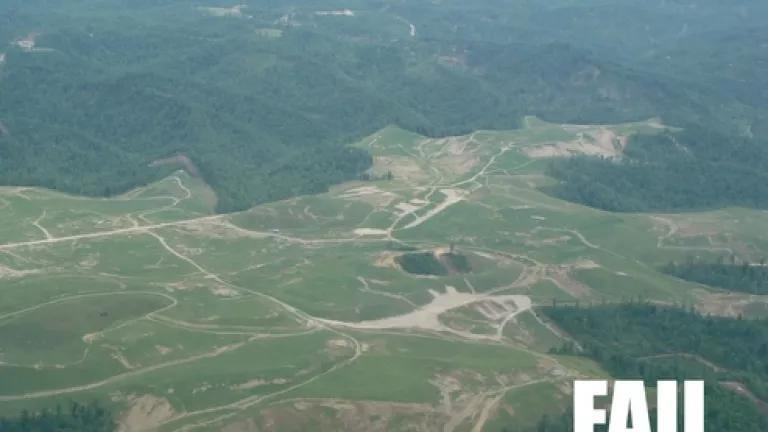
There's a popular TV show in which every week a family in need gets to have its delapidated house torn down and rebuilt into a luxurious mansion. This is called an "Extreme Home Makoever."
The coal industry reportedly has a cynical plan to re-brand mountaintop removal to make it seem more palatable to the public. In this case, blowing up an Appalachian ridge and leaving behind a lifeless leveled landscape would be called "mountaintop development."
An extreme mountain makeover for the world's most extreme strip mining? Hardly.
George Orwell must be rolling over in his grave.
It's bad enough that in Appalachia rapacious coal companies are hell-bent on flattening America's oldest mountains for the sake of a polluting rock, but to even imply that this destructive practice somehow benefits the local economies is beyond disgraceful. Not only has heavily mechanized mountaintop mining caused a drastic decline in jobs for miners, but it has left countless coalfield communities impoverished.
[UPDATE: Charleston Gazette reporter Ken Ward, Jr. in his Coal Tattoo blog today, takes the West Virginia Commerce Department to task for recently touting the creation of 13,000 jobs on former surface mines in West Virginia. In fact, after some good old-fashioned journalistic digging, Ward debunks the agency's pro-mining spin and questions whether "government development boosters and mining regulators are just interested in trying to help the coal industry 're-brand' strip mining, or in holding coal companies to the post-mining development requirements Congress established 33 years ago?"]
In a recent news story about this cynical marketing ploy by the coal industry, Chris Hamilton of the West Virginia Coal Association claims that post-mined lands in Appalachia converted to industrial, commercial or recreational facilities generate a "tremendous amount of economic development.” He further asserts that the terms “mountaintop removal” and “mountaintop development” are interchangeable since post-mined land is "always be left more valuable than it was before."
Not so, counters Vivian Stockman of the Ohio Valley Environmental Coalition. “If they’re hoping to, you know, create shopping malls on some of these, I don’t know where they’re going to get all the shoppers,” she said. “All the communities around these areas have been driven away.”
Stockman rightly challenges the notion that development should even be a justification for more mountaintop removal, because there are already more than enough undeveloped mine sites in the state. “Back in 2002 we had some volunteers create some maps for us,” she said. “There were just massive amounts of land that are not, in any way, shape or form, developed. It’s a complete myth that West Virginia needs any more flat land.”
Indeed, NRDC's recent analysis found that the industry's promise of reclaiming flat land for economic development is a big, flat lie. Our study -- "Reclamation FAIL" -- revealed that of the 1.2 million acres, including 500 mountains, that have been demolished by coal companies in Kentucky, West Virginia, Virginia and Tennessee, over 89% of sites have no post-mining development.
Make no mistake: In most cases when we lose a mountain, we gain a moonscape like the one below.

